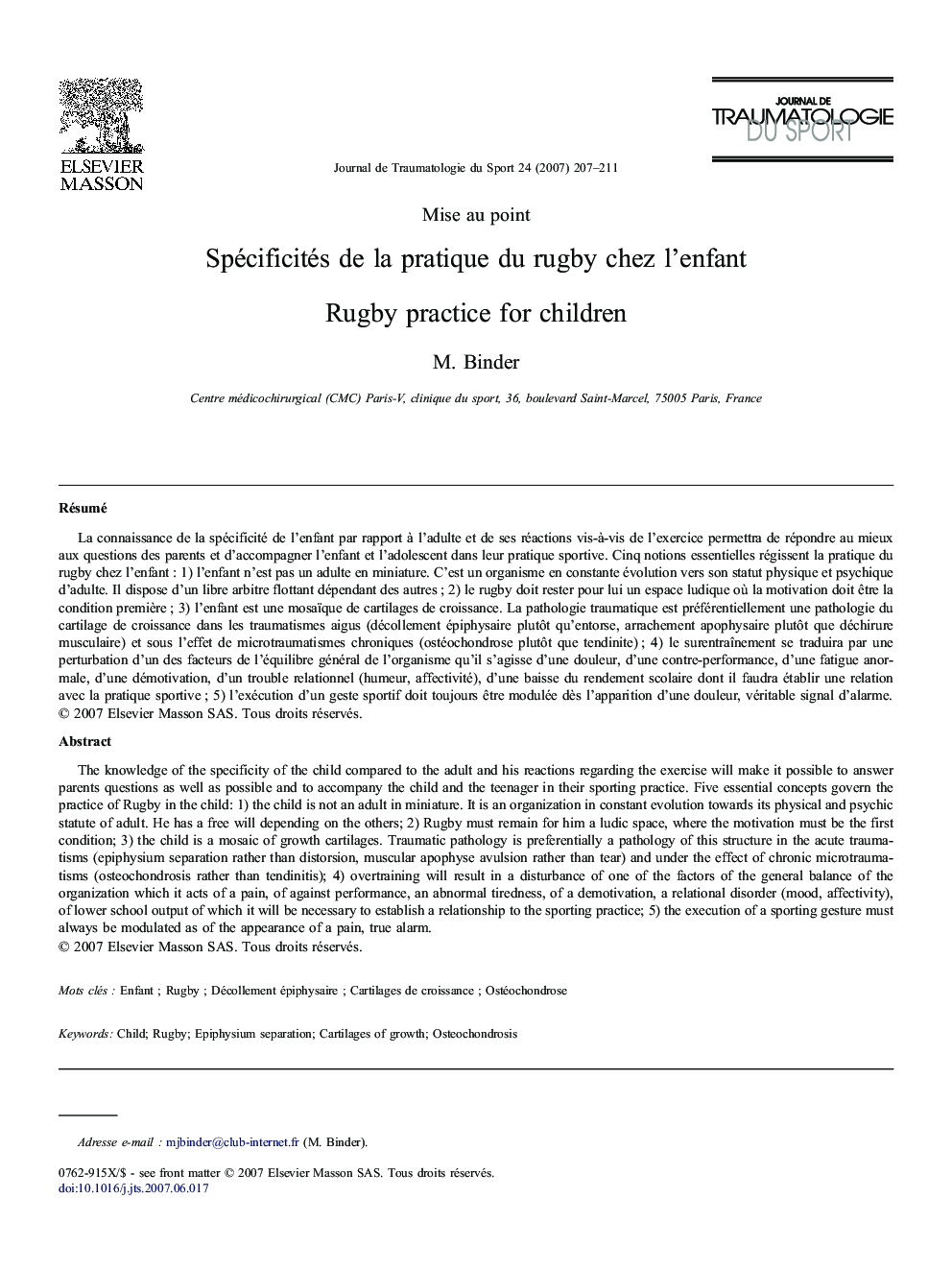| Article ID | Journal | Published Year | Pages | File Type |
|---|---|---|---|---|
| 4077006 | Journal de Traumatologie du Sport | 2007 | 5 Pages |
RésuméLa connaissance de la spécificité de l'enfant par rapport à l'adulte et de ses réactions vis-à-vis de l'exercice permettra de répondre au mieux aux questions des parents et d'accompagner l'enfant et l'adolescent dans leur pratique sportive. Cinq notions essentielles régissent la pratique du rugby chez l'enfant : 1) l'enfant n'est pas un adulte en miniature. C'est un organisme en constante évolution vers son statut physique et psychique d'adulte. Il dispose d'un libre arbitre flottant dépendant des autres ; 2) le rugby doit rester pour lui un espace ludique où la motivation doit être la condition première ; 3) l'enfant est une mosaïque de cartilages de croissance. La pathologie traumatique est préférentiellement une pathologie du cartilage de croissance dans les traumatismes aigus (décollement épiphysaire plutôt qu'entorse, arrachement apophysaire plutôt que déchirure musculaire) et sous l'effet de microtraumatismes chroniques (ostéochondrose plutôt que tendinite) ; 4) le surentraînement se traduira par une perturbation d'un des facteurs de l'équilibre général de l'organisme qu'il s'agisse d'une douleur, d'une contre-performance, d'une fatigue anormale, d'une démotivation, d'un trouble relationnel (humeur, affectivité), d'une baisse du rendement scolaire dont il faudra établir une relation avec la pratique sportive ; 5) l'exécution d'un geste sportif doit toujours être modulée dès l'apparition d'une douleur, véritable signal d'alarme.
The knowledge of the specificity of the child compared to the adult and his reactions regarding the exercise will make it possible to answer parents questions as well as possible and to accompany the child and the teenager in their sporting practice. Five essential concepts govern the practice of Rugby in the child: 1) the child is not an adult in miniature. It is an organization in constant evolution towards its physical and psychic statute of adult. He has a free will depending on the others; 2) Rugby must remain for him a ludic space, where the motivation must be the first condition; 3) the child is a mosaic of growth cartilages. Traumatic pathology is preferentially a pathology of this structure in the acute traumatisms (epiphysium separation rather than distorsion, muscular apophyse avulsion rather than tear) and under the effect of chronic microtraumatisms (osteochondrosis rather than tendinitis); 4) overtraining will result in a disturbance of one of the factors of the general balance of the organization which it acts of a pain, of against performance, an abnormal tiredness, of a demotivation, a relational disorder (mood, affectivity), of lower school output of which it will be necessary to establish a relationship to the sporting practice; 5) the execution of a sporting gesture must always be modulated as of the appearance of a pain, true alarm.
